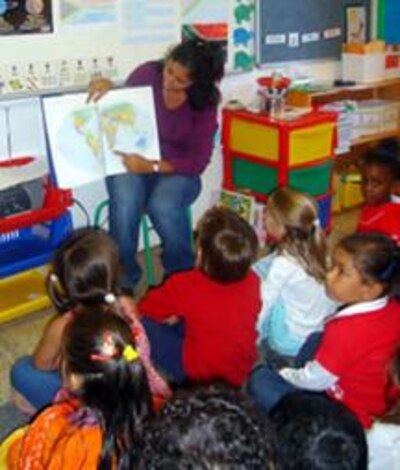
In response to yesterday’s post about the Core Knowledge Reading Program, reader Smith asks,
Is he saying their is a core set of content that would prepare a student to understand a randomly selected reading passage on a standardized test? Could someone explain this idea to a non-ELA teacher? I’ve always assumed those reading passages could range from “The Mysteries of Ancient Egpyt” to “Sally’s Bad Day at School” to “Roger’s Time Machine Adventure”. How is content selected?
Great question. It’s true that the content of test reading passages varies, and I don’t think anyone believes that a child can be prepared with content knowledge specific to every possible topic.
Rather, some children enter school knowing thousands more words than others, and this difference compounds over years of schooling in a “rich get richer” scenario called the “Matthew Effect” by researchers. (Don’t take my word for it: this study, one of many, found that by age 3, children of parents with smaller vocabularies not only knew fewer words, used fewer words per hour, and used a smaller variety of words per hour, “but they were also adding words more slowly.”)
Hirsch summarized this effect in a 2006 article in American Educator:
Many specialists estimate that a child (or an adult) needs to understand a minimum of 90 percent of the words in a passage in order to understand the passage and thus begin to learn the other 10 percent of the words. Moreover, it’s not just the words that the student has to grasp the meaning of—it’s also the kind of reality that the words are referring to…. When a child doesn’t understand those word meanings and those referred-to realities, being good at sounding out words is a dead end. Reading becomes a kind of Catch-22: In order to become better at reading with understanding, you already have to be able to read with understanding.
Echoing Hirsch, cognitive neuroscientist and child development expert Maryanne Wolf notes in her book Proust and the Squid: The Story and Science of the Reading Brain,
Unbeknownst to them or their families, children who grow up in environments with few or no literacy experiences are already playing catch-up when they enter kindergarten and the primary grades. It is not simply a matter of the number of words unheard and unlearned. When words are not heard, concepts are not learned. When syntactic forms are never encountered, there is less knowledge about the relationship of events in a story. When story forms are never known, there is less ability to infer and to predict. When cultural traditions and the feelings of others are never experienced, there is less understanding of what other people feel.
So, the more the child knows about the world, the more language experiences the child has had across a range of literary genres, and the more vocabulary the child knows, the more likely the child can use the reading comprehension strategies teachers spend so much time on, like learning new words from context or making predictions about what will happen next. Children without that background knowledge and vocabulary gain less from each text encountered, and the gap widens.
A child who knows 90% of the words in a passage on the English Language Arts (ELA) test, and who has read or heard similar types of texts, has a fighting chance of figuring out unknown vocabulary and understanding the story; a child who knows only 80% and has never encountered a text in that genre may be stuck.
More to come on how content is selected, and what teachers in upper elementary, middle, and high school — even or especially content area teachers — can do to help kids understand what they read.
About our First Person series:
First Person is where Chalkbeat features personal essays by educators, students, parents, and others trying to improve public education. Read our submission guidelines here.
